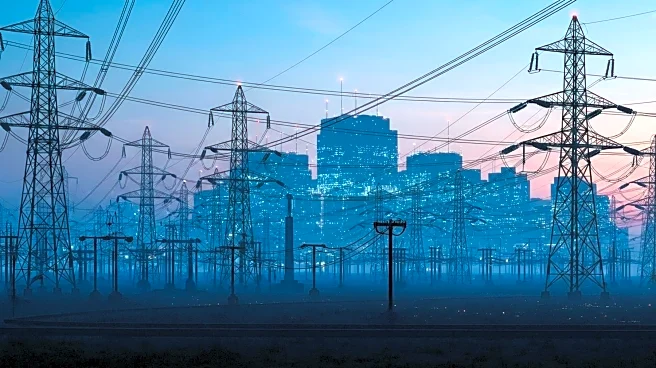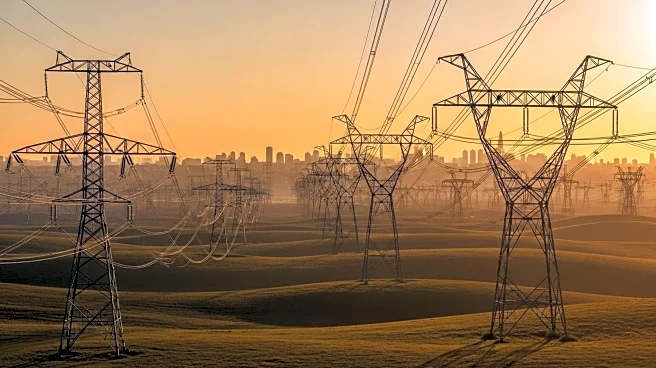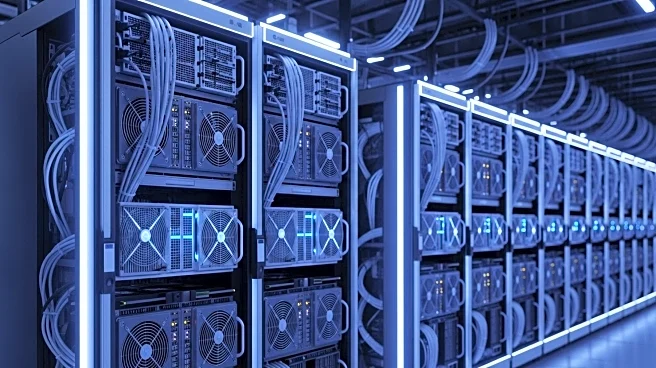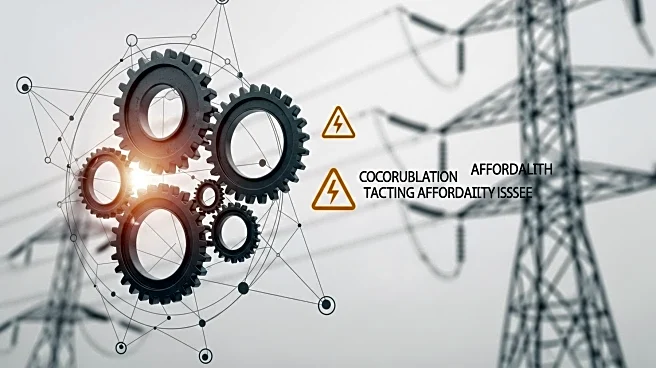What's Happening?
The PJM Interconnection's recent capacity auctions have seen a significant increase in prices, primarily driven by the growing demand from data centers. According to Monitoring Analytics, the grid operator's market monitor, data center load contributed to an 82% increase in auction revenue, reaching $16.1 billion. This surge has resulted in double-digit increases in electricity bills for some utility customers across PJM's service area, which includes parts of 13 Mid-Atlantic and Midwest states and the District of Columbia. The market monitor highlights that the current capacity market conditions are largely due to the substantial load additions from data centers, rather than organic load growth. PJM is now working on new rules to manage the integration of large data centers, aiming to file a proposal with the Federal Energy Regulatory Commission by the end of the year.
Why It's Important?
The rising capacity prices in PJM's auctions have significant implications for electricity consumers, as these costs are ultimately passed down to them. The increased demand from data centers is reshaping the electricity market, leading to higher bills and raising concerns about the sustainability of current practices. The situation underscores the need for innovative solutions in power system management to accommodate the growing digital economy without disproportionately impacting consumers. Additionally, the development of new rules for data center integration could set a precedent for how large energy consumers are managed in the future, potentially influencing policy and regulatory frameworks across the U.S.
What's Next?
PJM is in the process of developing new rules to better manage the integration of large data centers into its system. This includes proposals to enhance load forecasting and require financial security from large load customers. The grid operator plans to submit these proposals to the Federal Energy Regulatory Commission by the end of the year. As these changes are implemented, stakeholders, including state utility commissions and large energy consumers, will likely engage in discussions to shape the final regulations. The outcome of these efforts could have lasting effects on how capacity markets operate and how large energy consumers are integrated into the grid.
Beyond the Headlines
The rapid growth of data centers highlights broader challenges in balancing technological advancement with sustainable energy practices. As data centers continue to proliferate, their energy consumption patterns could drive significant changes in infrastructure investment and energy policy. This situation also raises ethical questions about the equitable distribution of energy costs and the environmental impact of expanding digital infrastructure. Long-term, the industry may need to explore alternative energy solutions and more efficient technologies to mitigate these impacts.










